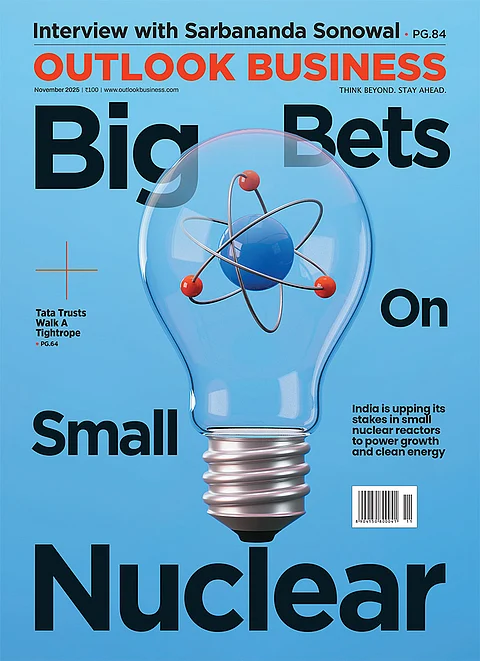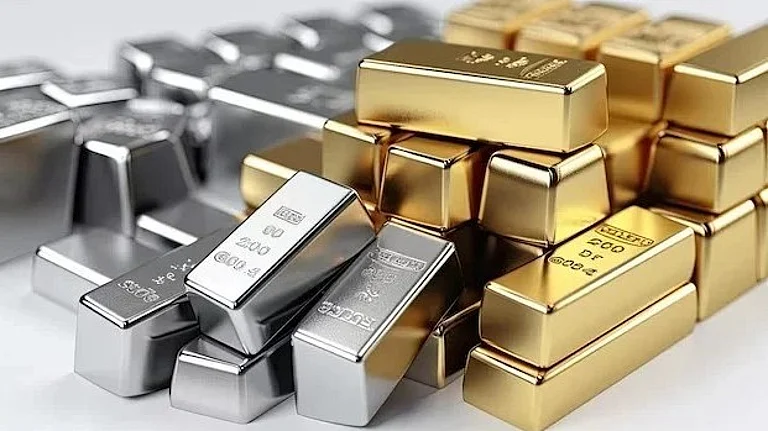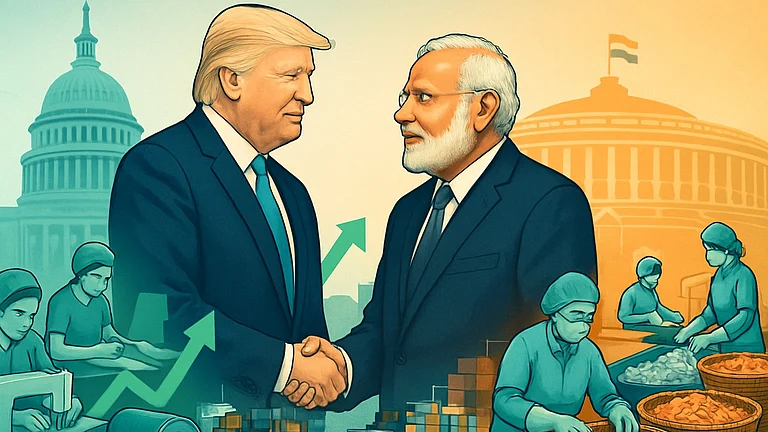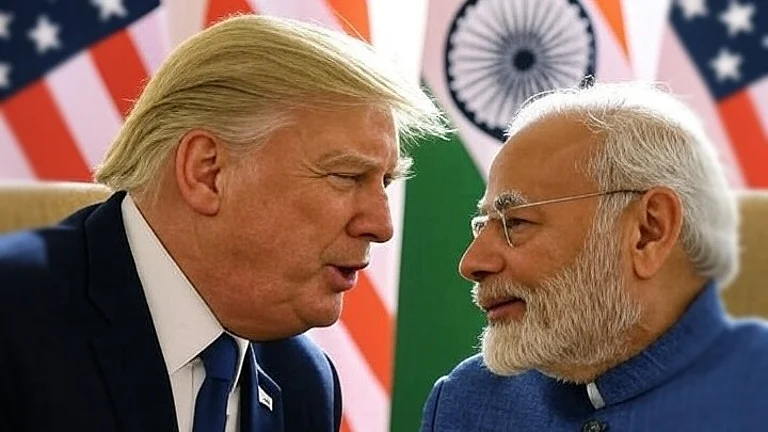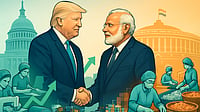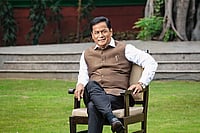
Trump’s Asia tour signals a sharp US pivot eastwards excluding India.
Washington rewards aligned Asian partners with lower tariffs and big deals.
India risks losing export share amid rising US–Asia trade realignments.
Experts say India’s leverage now lies in geopolitics, not trade power.
As US President Donald Trump concluded his Asia tour last month, he was even presented with an ornate gold crown during a high-honour ceremony in South Korea. The grand gestures and billion-dollar accords marked Trump’s stops in Malaysia, Japan and South Korea as a dramatic US pivot eastwards.
From Kuala Lumpur to Tokyo and Seoul, Trump inked sweeping investment pledges, critical minerals agreements and trade pacts that highlighted his preference for bilateral deals rewarding those who align with Washington’s agenda.
But while Asia’s capitals laid out the red carpet, New Delhi’s corridors remained silent as the unfinished trade deal limited the scope for further India-US discussions, raising questions about whether India is being sidelined in America’s new Asia calculus and losing edge.
Trump’s Transactional Focus
Trump’s renewed courtship of Asia is driven by a transactional, “America First” motto that prizes deals and loyalty over multilateralism.
“Trump’s foreign policy often mixes toughness without any relation to trade,” says Pradeep S Mehta, secretary general at economic and public policy think tank CUTS International. “In Venezuela, he imposed sanctions, threatened force, and even offered a $50mn reward for President Maduro’s capture. Yet, he allowed Chevron to keep producing and exporting oil from the country,” he points out.
Throughout the Asia tour, Trump championed big-ticket bilateral agreements designed to advance American economic interests and strategic supply chains.
Japan, for instance, announced projects worth part of its massive $550bn investment commitment in the US, spanning energy, advanced electronics and shipbuilding. A US–Japan critical minerals pact was also signed to secure rare earth supply chains, reflecting Washington’s push to counter China’s dominance by allying with like-minded Asian partners.
Malaysia, on the other hand, agreed to slash tariffs for US goods across industries and to open its critical minerals sector to American firms, even pledging not to restrict exports of rare earths to the US. In return, the US offered Malaysia selective tariff exemptions (with a baseline 19% tariff on imports otherwise) as a reward for being an “aligned” partner.
The message was clear: America’s gaze was shifting east, but on terms defined in Washington, DC. Countries that accommodated US demands on trade and geopolitics were granted preferential terms, while those showing even mild resistance faced punitive barriers.
South Korea’s experience underscored the point. Seoul reportedly secured a lower 15% tariff rate — down from 25% — by pledging $350bn in investments, greater energy imports and wider market access to US firms.
At the Asia-Pacific Economic Cooperation (APEC) Summit in Busan, Trump even held a brief meeting with Chinese President Xi Jinping. Beijing agreed to relax export controls on rare earth minerals, boost US soybean imports, and cooperate on fentanyl precursor control. In turn, Washington paused the implementation of new 100% tariffs on Chinese exports for another year.
“Trump even used the term 'G2' a few times —though China has not. So, the economic relationship between the US and China under Trump 2.0 is something we’ll need to watch carefully,” says Harsh Pant, vice president of Studies and Foreign Policy at Observer Research Foundation (ORF).
Should India Be Worried?
Trump’s bonhomie with other Asian capitals has unfolded without India in the frame — a notable absence for a country that sees itself as both a natural US partner and a rising Asian power.
For New Delhi, the stakes are tangible. Strengthening US ties with other Asian economies is already chipping away at India’s trade advantages.
“The biggest challenge for India,” says Pant, “is managing its relationship with Trump without a formal trade deal. Without one, India simply can’t move forward.”
After Trump abruptly slapped total tariffs of 50% on a wide range of Indian products in late August – doubling an initial 25% “reciprocity” tariff with an extra 25% penalty over India’s Russian oil purchases – Indian exports to the US suffered greatly. India’s shipments to its biggest market plunged 37.5% between May and September, collapsing from $8.8bn to $5.5bn in just four months.
A trade analysis by New Delhi-based think tank Global Trade Research Initiative (GTRI) found that Indian exports of labour-intensive goods – from textiles to gems and auto parts – suffered a 33% decline over that period, with US orders shifting to countries like Vietnam, Thailand and Mexico or wherever possible.
If these trends persist, India risks ceding long-term market share to Vietnam, Indonesia, and even back to China, undercutting New Delhi’s ambitions to be a global manufacturing hub.
Although both sides insist that a trade deal is “around the corner”, but the same conversations took place during the early trade-war days, when India was expected to be among the first to sign such an agreement. Today, it faces some of the steepest tariffs among major US partners.
“India should continue its efforts towards a trade deal. We can’t afford a situation where other countries have deals and we don’t—that’s not desirable at all. We should negotiate a deal that serves our interests,” says Veeramani, director at the Centre for Development Studies (CDS).
India’s Trump Cards
The current dynamic, while challenging, is not immutable. India has the potential to reclaim its agency and ensure it doesn’t become a passive victim of great-power jockeying.
However, for India—which fiercely guards its strategic autonomy—the current choices are not easy. New Delhi must balance its independent stances on Russia and trade protectionism against the risk of being left behind in the region’s shifting economic order.
Veeramani observes that while it is pragmatic for India to maintain an independent working relationship with China, the country cannot sideline its long-standing ally, Russia, nor risk straining ties with the United States. “In trade matters, our bargaining power is limited—our real leverage lies in geopolitics,” he remarks.
India’s geography remains one of its biggest assets. Its commanding position in the Indian Ocean — at the crossroads of key maritime routes linking the Middle East, Africa, and Asia — allows it to safeguard vital sea lanes such as the Strait of Hormuz, the Malacca Strait, and the Suez route. This gives India considerable sway over trade corridors crucial to both regional security and global commerce, including those tied to US interests.
“Diplomatically, India’s leadership among Global South countries — through the G20, the India–Africa Forum Summit, and ASEAN partnerships — gives Washington a bridge to emerging economies where US influence is limited,” Mehta of CUTS International adds.
Even if Trump’s Asia pivot appears to be moving ahead without India, the question is how and when India will choose to reassert its place in this shifting regional order.







